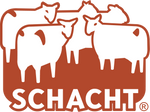Weaving, like any other craft, has a vocabulary all its own, but it's not difficult to learn weaving language.

In woven fabric, warp ends (or threads) and weft picks interlace with each other. The loom holds the warp under tension. The weaver winds weft around a shuttle. The shuttle goes under and over warp ends in a particular pattern, then the weaver beats the pick into place. The fell line is the last pick woven.
Weavers describe a handwoven fabric by its
- sett or ends per inch (EPI)—how closely the warp ends are spaced
- picks per inch (PPI)—how closely the weft picks are spaced
- weave structure—the pattern in which weft goes under and over warp
In plain weave (also called tabby), the weft goes over 1 warp, then under 1 warp, all the way across. Each pick alternates: you weave one pick over-under-over-under, then the next pick under-over-under-over. In a balanced plain weave, EPI and PPI are the same. Weavers can choose to spread out the warp ends and beat in the weft closely, creating a weft-faced weave (most commonly for tapestry weaving). Or they can space the warp closely and widen the space between weft picks, creating a warp-faced weave (often seen in bands made on an inkle loom or with weaving cards).
There are many other weave structures besides plain weave, like twill, satin, and block weaves. Here the weaver might use more than one warp or weft, or the interlacement pattern will include floats, where the weft crosses more than 1 warp.
